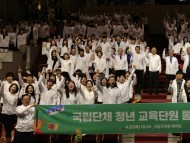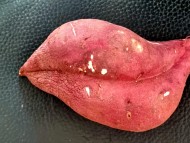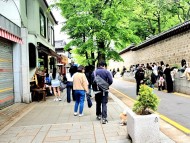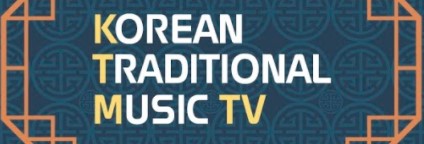2024.05.03 (금)
The New Evidence of the Baekje Royal Family’s Funeral Culture in Royal Tombs, Buyeo Confirmed
- Two Potteries buried at the each side of the graveentranceroad in Tomb No.4(Seosangchong) are excavated the first -
- Michael Lammbra…
- 등록 2022.02.23 18:00
- 조회수 12,439
The Buyeo National Research Institute of Cultural Heritage (Director: ImSeung-Kyung) has commenced the excavation of the Royal Tomb No.4, Buyeo since the second half of last year. Through this excavation, two potterieswhich illuminate one aspect of the funeral culture of the Baekje period were found.
Royal Tombs, Buyeo in maintenance contains six tombs exposed during the Japanese colonial period(1915, 1917) and one tomb discovered during the repair and maintenance work in 1966. However, there are considerable difficulties to apprehend the funeral culture of the Baekje period because of brief research records and a lack of related photos and measured drawings. Especially in the case of Tomb No.4, it has been necessary to re-examined urgently due to the fact that measured drawings were not left and the result of preliminary research that there are quite differences in the size and the location between actual and restored mound.
The research showed that Tomb No.4 is a stone chamber tomb with corridor(橫穴式石室墳) which consists of the main chamber(玄室) where the deceased is lying, the tomb entrance tunnel(羨道), and the grave entrance road(墓道). In addition, the mound as upper structure of the tomb remained relatively well, the significant data demonstrating the construction method of the Baekje period’s Royal Tomb. The entire process of the research has been digitally recorded in consideration of future restoration and maintenance.
In particular, two buried facilities were firstidentified at the both side of the grave entrance road(墓道). It was confirmed that two potteries were placed upright in the each pit and covered with a flat plate-stone. These facilities are the first case confirmed among Baekje tombs and noted as a critical data related to the funeral culture of the Baekje period. It seems to be a significant evidence to restore ritual process considering the process that the grave entranceroad were dug for buried potteries after its construction. Furthermore, since revealing the filled contents of the potteries has been considered as an important clue to identifying a ritual process of the time, the institution is collaborating with Conservation Science Center in the National Research Institute of Cultural Heritage for conducting an analysis of organic matter from the soil accumulated inside the potteries.
In the face of a lack of historical materials, the buried potteries are critical material that can reveal the funeral culture of Sabi period in Baekje.
Meanwhile, from March of this year, excavation survey of Tomb No.3(Seohachong) will be promoted. It is noticed that like Tomb No.4, there are differences about the size and the location between the actual and the currently maintained onein Tomb No.3. That is why this excavation will be needed to make an accurate maintenance and restoration plan. Since Tomb no.3 is located adjacent to the south side of Tomb No.4, which was investigated last year, it is expected that critical results will be derived in understanding the geographical conditions of the tumuli and the order of construction in Royal Toms, Buyeo
The Buyeo National Institute of Cultural Heritage intends to recover the status of Royal Toms of Sabi period in Baekje through systemic excavation and research of Royal Toms, Buyeo. Furthermore, in order to adjust the correct size and location of the mound that had been over-represented, the institute plans to prepare maintenance and restoration plan for Royal Tombs that fully reflects the latest research and its results. Not only that, it is also planned that the site, Tomb No.3 and Tomb No.4 in excavation will be open to the public while the entire process of investigation will be shared to the public by producing a video, so that the investigation results could be promptly disclosed.
- [] 제6회 울진금강송 전국국악경연대회(06/08)
- [] 제29회 대통령상 한밭국악전국대회(07/06-07) (무용/기악/성악)
- [] 제8회 목담 최승희 전국국악경연대회(06/01) (판소리,기악)
- [] [서울]제28회 전국판소리경연대회(06/15-16)
- [] 제32회 대전전국국악경연대회(06/01-02)
- [] 제16회 순천 낙안읍성 전국가야금병창경연대회(05/25-26)
- [] 제18회증평국악경연대회(05/11)
- [] [군산]제32회 전국청소년민속예술경연대회(05/18)
- [] 제42회 전주대사습놀이 학생전국대회(5/18∼6/2)
- [] 제50회 전주대사습놀이 전국대회(5/18~6/3)
- [] 제20회 전국대금경연대회(06/08-09)
- [] 제4회 함양 전국국악경연대회(05/12)
- [] 제18회 대한민국 전통예술무용·연희대제전(06/09)<br>무용(전통무용…
- [] 제48회 부산동래 전국전통예술경연대회(06/15-16)(무용.기악)
- [] [부여]제1회충남전국청소년국악경연대회(05/04)(판소리.기악.타악)
- [] [광주]제21회 대한민국 가야금병창대제전(06/16)
- [] 제18회 과천전국경기소리경창대회(05/04)
- [] 제11회 곡성 통일전국종합예술대전(06/15-16)(판소리.무용, 기악,…
- [] 제24회 인천국악대제전 전국국악경연대회(05/25-26)
- [] 제26회 창원야철전국국악대전(07/06- 07)
- [] 2024 무안장애인 승달국악대제전(06/01-02)
- [] 제22회 무안전국승달국악대제전(06/01-02)
- [] 제10회 전국공주아리랑민요경창대회(05/26)
- [] 제17회 상주전국국악경연대회(05/19)(성악/무용·연희/기악)
- [] 제10회 전국밀양아리랑경창대회(05/26)
- [] 제21회 강남전국국악경연대회(05/22)(무용/타악/판소리/민요)
- [] 제26회 서편제보성소리축제 전국판소리 고수 경연대회(05/04-05)
- [] [순천]제10회 낙안읍성 전국 국악대전(04/27-28)
- [] 제29회 안산전국청소년국악경연대회(05/26)
- [] 제26회(통합58회) 여수진남전국국악경연대회(05/18-19)
- [] 제51회 대한민국 춘향국악대전 경연대회(05/05)(05/11-12)
- [] 제33회 고령전국우륵가야금경연대회(04/26-27)
- [] [부평]제8회 전국 청소년국악경연대회(05/11)(관악/현악/성악)
- [] 제22회 구례전국가야금경연대회(05/04-05)
- [완도]제24회 장보고국악대전 전국경연대회(05/05-06)(무용/판소리…
- [] 제23회 대한민국 빛고을 기악대제전(05/25-26)
- [] [인천] 제10회 계양산국악제(04/26-27) (풍물,사물, 기악,민요…
-

[수요연재] 한글서예로 읽는 우리음악 사설(191)<br>원주아리랑
원주아리랑을 쓰다. 한얼이종선 (2024, 한지에 먹, 40× 63cm) 아침에 만나면 오라버니요 밤중에 만나면 정든 님 일세...
-

[금요연재] 도자의 여로 (143) <BR> 백자철화편병편과 수물(受物)편
같은 백자가마터 출토품이라는 것도 이규진(편고재 주인) 편병은 병을 만든 후 앞과 뒤를 누르거나 두드려 면을 만든 그릇이다. 조선 전기부터 후기까지 지속적으로 만든 기...
-

[국악신문] 정창관의 ‘국악-신반’ <21>
윤하림 해금풍류 II 산조 윤하림 해금풍류 II 산조. (2024년 Sound Press 음반번호없음) 2023년 윤하림 ...
-

[국악신문 소장자료] (42)아리랑 최초 취입 아리랑, ‘1913년 京城卵卵打令’
일본 니포노폰 취입 조선민요 ‘경성란란타령’, 1913년 Nipponophone 6170 SP음반.(국악신문 소장자료) ...
-

[Pick리뷰] 경성 모던걸들의 춤판 '모던정동'…"자유 갈망하는 모습 담아"
30일 서울 중구 국립정동극장에서 열린 국립정동극장예술단 정기공연 '모던정동' 프레스콜에서 출연진이 주요 장면을 시연하고 있다. 2024.4.30 ...
-

세실풍류, 박병천의 '구음시나위'에 허튼춤 선사한 안덕기
국립정동극장이 4월 한달간 진행하는 '세실풍류 : 법고창신, 근현대춤 100년의 여정'에서 23일 박병천의 '구음시나위'에 허튼춤 추는 안덕기 (사진=국립정...
-

세실풍류, 동해별신굿 민속춤사위를 제해석한 조재혁의 '현~'
국립정동극장이 4월 한달간 진행하는 '세실풍류 : 법고창신, 근현대춤 100년의 여정' 에서 조재혁의 '현~' 공연 모습. (사진=국립정동극장). 2024....
-

[Pick리뷰] 이호연의 경기소리 숨, ‘절창 정선아리랑!’
# ‘이호연의 경기소리 숨’ 공연이 지난 4월 26일 삼성동 민속극장 ‘풍류’에서 열렸다. 20대에서 60대까지의 제자들 20명과 5명의 반주자와 함께 경기잡가, 경기민요, 강원도...
-

[PICK인터뷰] 미리 만나 보는 '제94회 남원춘향대전'
[국악신문 정수현 전문기자]=대한민국에서 가장 오래된 축제로 손꼽히는 남원춘향대전(남원춘향제)이 오는 5월 10일(금)부터 5월 16일(목)까지 7일간 남원시 광한루원 일대에서 열...
-

[Pick리뷰] 모던연희극 ‘新칠우쟁론기’
4월 18일부터 20일, 남산국악당에서 아트플랫폼 동화의 모던연희극 ‘新칠우쟁론기’가 펼쳐졌다. [국악신문 정수현 전문기자]=지...
-

[PICK인터뷰] 국립국악관현악단의 채치성 예술감독을 만나다
[국악신문 정수현 전문기자]=봄비가 촉촉이 땅을 적시는 4월, 국립국악관현악단 예술감독으로 취임한 지 6개월이 된 채치성 예술감독님을 만났다. 그는 국악방송 사장, KBS 국악관현...
-

[Pick리뷰] 이 시대의 새로운 춘향가- ‘틂:Lost&Found’
2024 쿼드초이스_틂 (사진=서울문화재단 대학로극장 쿼드 나승열) [국악신문 정수현 전문기자]=대학로극장 쿼드의 ‘쿼드초이스’...
-

[Pick리뷰] 세 악단의 조화로운 하모니, ‘하나 되어’
지난 4일, 국립국악원은 국립국악원 창작악단, KBS국악관현악단, 전북특별자치도립국악원 관현악단 118명으로 구성된 연합 관현악단 무대 ‘하나되어’를 국...
-

[인터뷰] 김경혜의 '시간의 얼굴' 작품전, 16일 개막
칠순을 넘어서는 길목에서 중견작가 김경혜(영남이공대 명예교수) 작가의 열번째 작품전이 오는 16일부터 25일까지 10일간 대구시 중구 슈바빙 갤러리에서 열린다.전시되는총 50여 개...






























